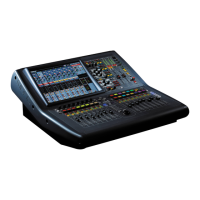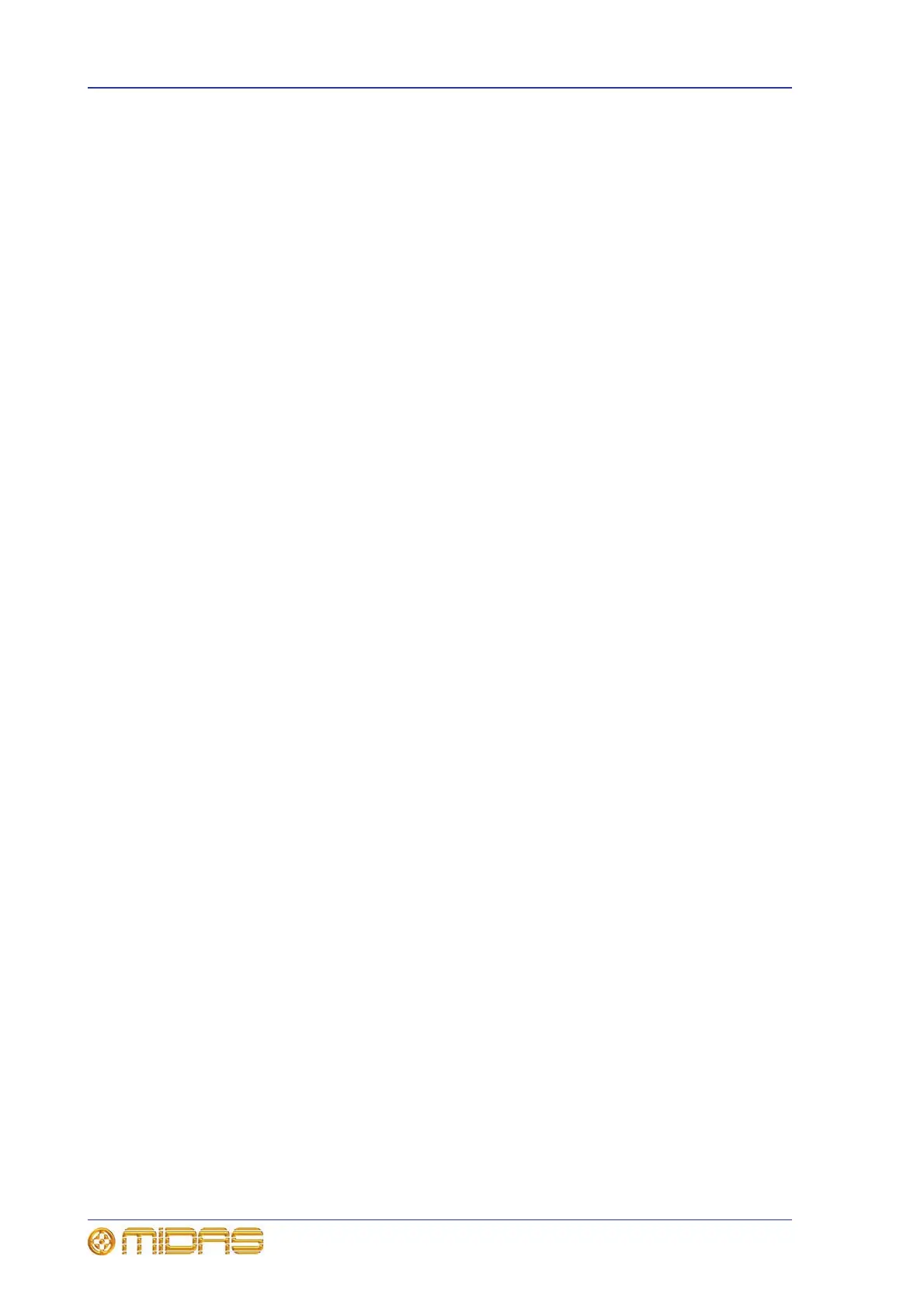304 Appendix A: Application Notes
PRO1 Live Audio System
Operator Manual
Band 2 can be switched from parametric to high pass filter 24dB.
Note: When the 24dB/octave high pass filter is selected in band 2, band 1 becomes
inaccessible.
Band 6 can be switched from parametric to any of three shelving modes: soft; lo pass
filter 6dB; and lo pass filter 12dB.
Description
Soft (treble)
The soft treble response provides a very gentle gradient between EQ’d and non-EQ’d
frequency areas. This produces the absolute minimum of phase shift but does not
provide much differentiation, thus frequencies outside the area of interest are often
unintentionally EQ’d. This is best used to provide gentle shaping of pre-mixed material.
Warm (bass)
The warm bass response provides a very gentle gradient between EQ’d and non-EQ’d
frequency areas. This produces the absolute minimum of phase shift, but does not
provide much differentiation, thus frequencies outside the area of interest are often
unintentionally EQ’d. This is best used to provide gentle shaping of pre mixed material.
High pass filter (HPF)
The HPF attenuates (not boosts) all frequencies below a certain level (cut-off
frequency) while allowing all those above it to pass through. The harshness or
smoothness with which the sound is removed beyond this point is determined by the
dB/octave, with 6dB being the most common. The HPF is generally used to take rumble
or hum out of any sound source, but may also produce a sound effect by manipulation
of the controls.
The PRO1’s high pass filters have gain roll off before the corner frequency, which is
variable.
Lo pass filter (LPF)
The LPF attenuates (not boosts) all frequencies above a certain level (cut-off frequency)
while allowing all those below it to pass through. The harshness or smoothness with
which the sound is removed beyond this point is determined by the dB/octave, with 6dB
being the most common. The LPF is generally used to reduce noise in quiet passages or
to take the fizz off any source with excessively high frequencies, but may also produce
a sound effect by manipulation of the controls.
The PRO1’s low pass filters have gain roll off after the corner frequency, which is
variable.

